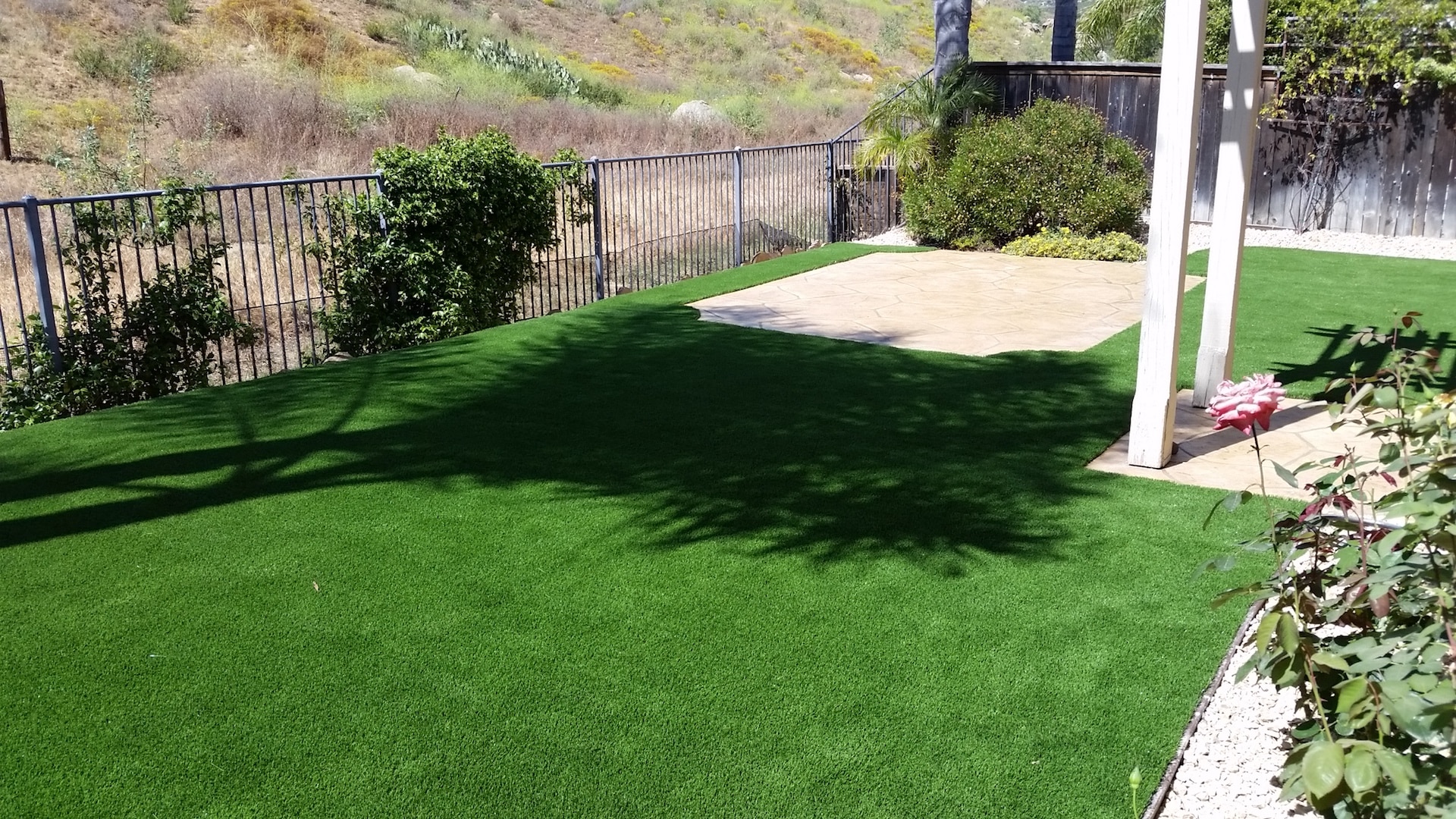How To Install Artificial Grass On A Sloped Surface In San Diego Ca?

- The key to a successful installation on a sloped surface lies in proper preparation. Begin by removing any existing vegetation, rocks, and debris from the area. Grade the slope to ensure proper drainage, aiming for a gentle slope that allows water to flow away from your property. This will prevent water accumulation under the artificial grass and maintain a level surface.
- A solid and well-draining base is essential for the longevity of your artificial grass. On a sloped surface, opt for a combination of crushed rock and decomposed granite as the base material. This mixture provides stability, proper drainage, and prevents the formation of lumps or depressions. Compact the base thoroughly to create a smooth and even surface.
- Edging is crucial to keeping your artificial grass securely in place on a sloped surface. Use flexible and sturdy materials like bender board or steel edging to create boundaries and prevent the grass from shifting. Secure the edging firmly into the ground, following the contour of the slope. This will give your installation a polished look and prevent the edges from curling or lifting.
- Seaming artificial grass on a slope requires special attention. To create seamless and secure seams, use high-quality seam tape and adhesive. Install the grass in sections, making sure the fibers face the same direction for a consistent appearance. Additionally, consider using landscape staples or nails to anchor the grass on the slope. Place the staples strategically along the edges to keep the grass in place, especially on steeper sections.
- Infill plays a vital role in maintaining the structure and appearance of your artificial grass. On a sloped surface, use a slightly heavier infill than usual to prevent the grass from sliding down the slope. Spread the infill evenly using a drop spreader, and use a stiff brush to work it into the fibers. This will help the grass stay upright and provide a natural look.
FAQs
Can I Install Artificial Grass On A Steep Slope?
Yes, you can install artificial grass on a steep slope, but it requires careful planning and the right techniques. Choose quality materials, ensure proper drainage, and use appropriate installation methods to secure the grass in place.
How Do I Prevent Water Runoff On A Sloped Artificial Grass Surface?
Proper grading and base preparation are essential to prevent water runoff. Ensure that the slope is graded correctly to allow water to flow away from your property. Use a well-draining base material to avoid water accumulation under the grass.
Is Professional Installation Necessary For Sloped Surfaces?
While it’s possible to install artificial grass on a sloped surface yourself, professional installation can ensure a more precise and durable result. Professionals have experience dealing with the challenges of sloped installations and can provide expert guidance.
Conclusion
Installing artificial grass on a sloped surface can transform your outdoor space into a beautiful and functional area with minimal maintenance. By following the tips mentioned above and paying attention to proper preparation, quality materials, and installation techniques, you can achieve a seamless and long-lasting artificial grass installation that enhances the beauty of your landscape while overcoming the challenges posed by the slope. Remember, a well-installed artificial grass surface on a slope not only looks great but also provides a comfortable and usable space for various outdoor activities. For more information, contact Artificial Turf San Diego Ca at (619) 369-0049.